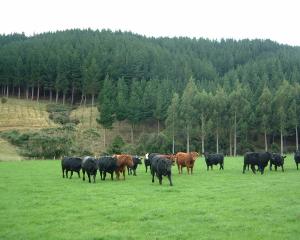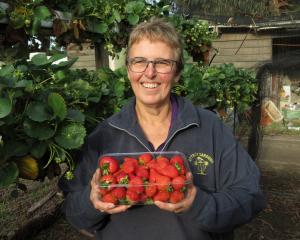Early potato harvests are looking good for South Canterbury with early indications it will be an average season, Potatoes NZ technical manager Iain Kirkwood says.
Heavy rain pre-Christmas resulted in some Black Leg and Powdery Scab in crops but this has not proved a problem in Canterbury where between 50% and 60% of the national crop is grown, most of that in South Canterbury.
''Thankfully the early indications from harvested crops in these areas is that the occurrence is not too high,'' Dr Kirkwood said.
An outbreak of the mop-top virus (PMTV) in potato tubers in both South and Mid Canterbury last year is still being monitored.
''Those are the only areas so far, where suspect potatoes have been tested.
''The majority of paddocks that have tested positive for the virus are in Mid-Canterbury region.
''Potatoes NZ is continuing to work with Biosecurity New Zealand on the response, to understand the spread and look at how industry can manage to minimise the impacts of the virus long-term.''
The affected potatoes are from the Innovator variety, which are only used for potato chips.
South Canterbury grower Raymond Bowan of Heartland Potato Chips said they had not been troubled by the virus and while the wet conditions had created a few bugs they had not been affected too much.
He had 250ha in potatoes and employed eight staff, which grew to 20 when the main crop was lifted between March and June.
An additional 20 are employed at the Bowans' processing factory.
Canterbury has five chip processing plants - two large processors, Talleys (Timaru) and McCain (Ashburton), and smaller processors Heartland Chips, Makikihi Fries and Mr Chips Hornby.
Meanwhile, Potatoes NZ chief executive Chris Claridge said the industry was close to being worth $1billion.
If the value of exports was assessed per hectare, he estimated the export receipts per hectare were three times those of dairy.
''Our environmental footprint is good as well, so it is a good crop in terms of generating domestic value and export opportunities.
''Our total industry value at the end of 2017 was $982million.
''Frozen fry exports have gone from $76.7million to $91.70million between 2013 and 2017. The industry has 173 growers.
''Heartland is a good example of vertical integration where the farming family is both a grower and processor,'' Mr Claridge said.
''But then you see bigger, more international corporate models. So there is room for both types of operations in the marketplace.''
-By Chris Tobin















